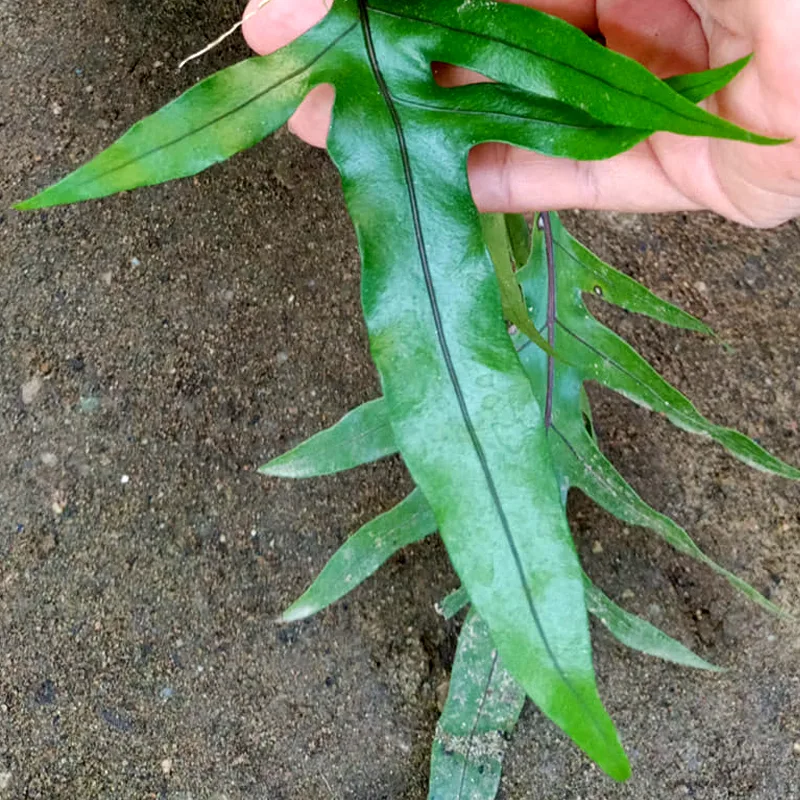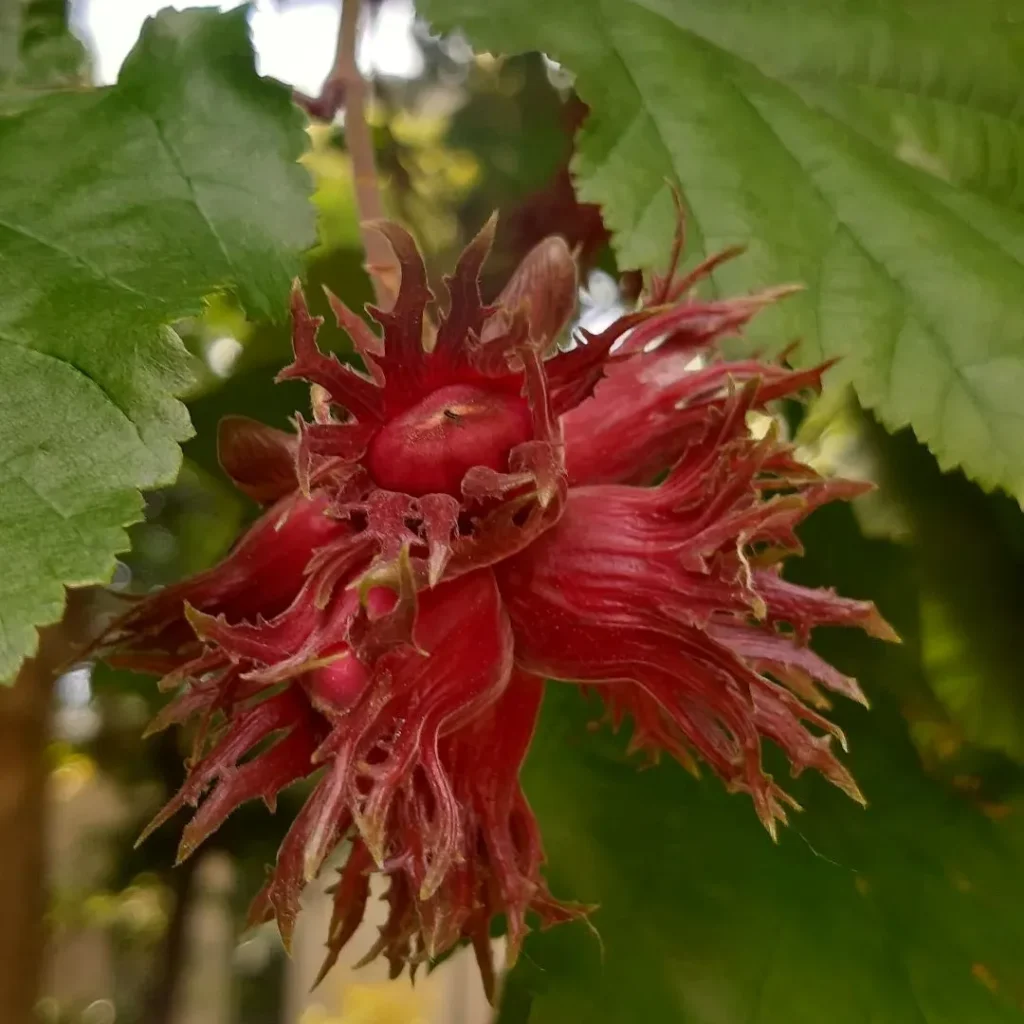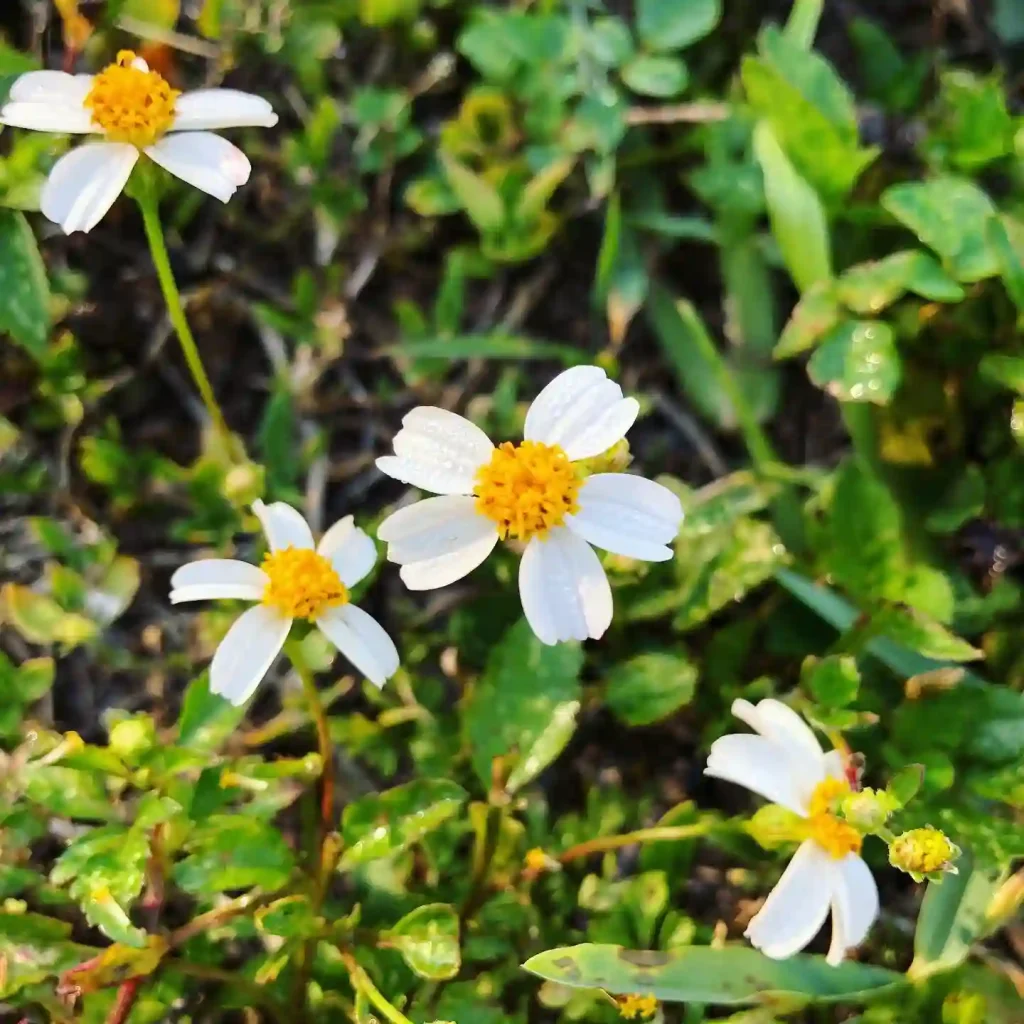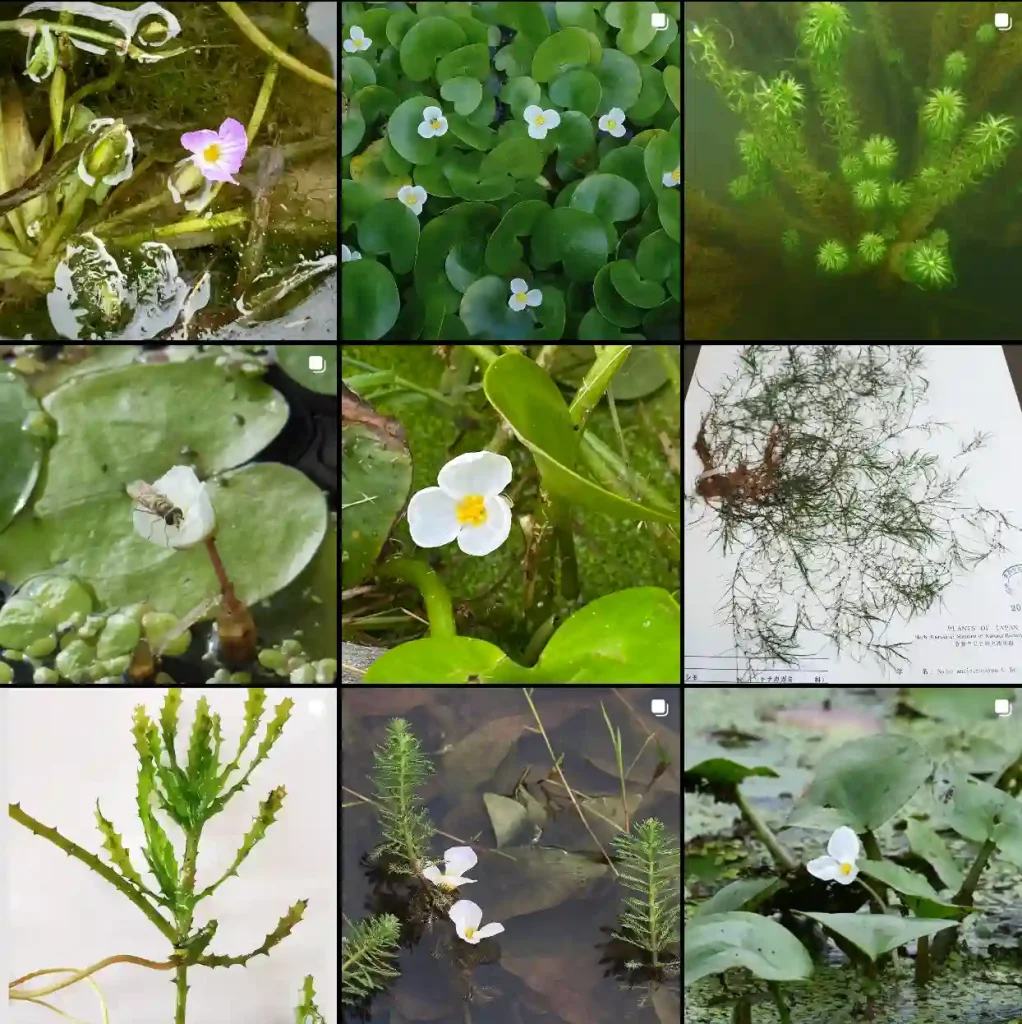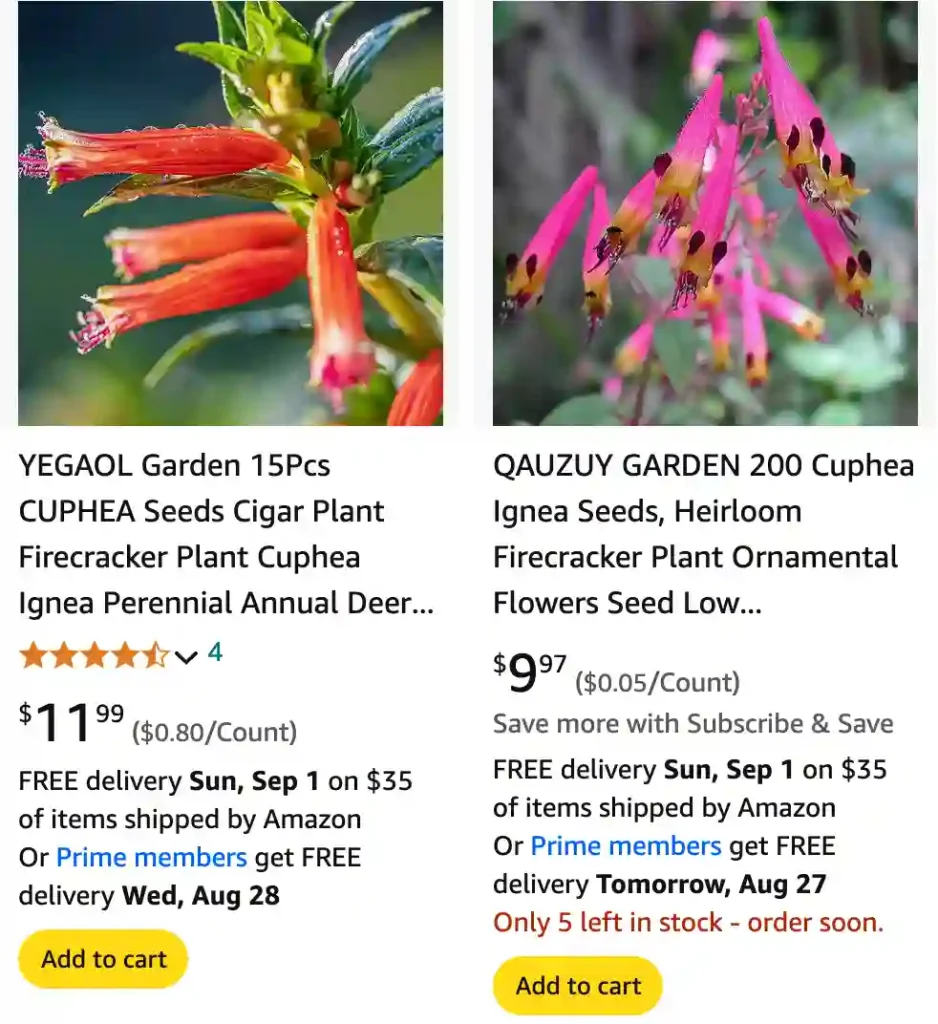
May 8 – Cuphea
"Cuphea, the firecracker plant, defines May 8."
Cuphea represents excitement and spontaneity. You have a playful and adventurous nature, always seeking new experiences. Like its fiery blooms, you light up the lives of those around you.
FAQs About Cuphea: A Comprehensive Guide
I’ve always been fascinated by Cuphea, a genus of flowering plants known for their vibrant blooms and hummingbird appeal. If you’re considering adding Cuphea to your garden or just curious about this plant, you might have some common questions. Here’s a detailed FAQ about Cuphea that covers everything from its care to its compatibility with wildlife.
What Is Cuphea?
Cuphea is a diverse genus of plants native to the Americas, belong to the Lythraceae family. Known for their striking flowers, which can be red, orange, yellow, or purple, Cuphea plants are often used in gardens and containers to attract pollinators. Their blooms resemble small, tubular structures that can vary significantly in shape and color, making them a colorful addition to any landscape.
Cuphea species
- Cuphea acicularis Koehne
- Cuphea acinifolia A.St.-Hil.
- Cuphea acinos A.St.-Hil.
- Cuphea adenophylla T.B.Cavalc.
- Cuphea aequipetala Cav.
- Cuphea affinitatum Koehne
- Cuphea alaniana S.A.Graham
- Cuphea alatosperma T.B.Cavalc. & S.A.Graham
- Cuphea anagalloidea A.St.-Hil.
- Cuphea anamariae T.B.Cavalc. & S.A.Graham
- Cuphea angustifolia Jacq. ex Koehne
- Cuphea anisoclada Lourteig
- Cuphea annulata Koehne
- Cuphea antisyphilitica Kunth
- Cuphea aperta Koehne
- Cuphea appendiculata Benth.
- Cuphea aquilana S.A.Graham & T.B.Cavalc.
- Cuphea araguaiaensis Facco & T.B.Cavalc.
- Cuphea arenarioides A.St.-Hil.
- Cuphea aristata Hemsl.
- Cuphea armata S.A.Graham
- Cuphea aspera Chapm.
- Cuphea auriflora Lourteig ex Facco & T.B.Cavalc.
- Cuphea avigera B.L.Rob. & Seaton
- Cuphea bahiensis (Lourteig) S.A.Graham & T.B.Cavalc.
- Cuphea baillonis Koehne
- Cuphea blackii Lourteig
- Cuphea bolivarensis Lourteig
- Cuphea bombonasae Sprague
- Cuphea bonplandii Lourteig
- Cuphea brachyantha Koehne
- Cuphea brachypoda T.B.Cavalc.
- Cuphea bracteolosa Koehne
- Cuphea bustamanta Lex.
- Cuphea caesariata S.A.Graham
- Cuphea calaminthifolia Schltdl.
- Cuphea calcarata Benth.
- Cuphea calophylla Cham. & Schltdl.
- Cuphea campestris Mart. ex Koehne
- Cuphea campylocentra Griseb.
- Cuphea carajasensis Lourteig
- Cuphea cardonae Lourteig
- Cuphea carthagenensis (Jacq.) J.F.Macbr.
- Cuphea cataractarum Spruce ex Koehne
- Cuphea chiribiquetea Lourteig
- Cuphea ciliata Ruiz & Pav.
- Cuphea cipoensis T.B.Cavalc.
- Cuphea circaeoides Sm. ex Sims
- Cuphea concinna Koehne
- Cuphea confertiflora A.St.-Hil.
- Cuphea congesta S.A.Graham & T.B.Cavalc.
- Cuphea cordata Ruiz & Pav.
- Cuphea corisperma Koehne
- Cuphea crassiflora S.A.Graham
- Cuphea crudyana Koehne
- Cuphea cuiabensis Mart. ex Koehne
- Cuphea cunninghamiifolia T.B.Cavalc.
- Cuphea curiosa Lourteig
- Cuphea cyanea Moc. & Sessé ex DC.
- Cuphea cylindracea S.A.Graham
- Cuphea dactylophora Koehne
- Cuphea decandra W.T.Aiton
- Cuphea delicatula Brandegee
- Cuphea densiflora Koehne
- Cuphea denticulata Kunth
- Cuphea dibrachiata S.A.Graham
- Cuphea diosmifolia A.St.-Hil.
- Cuphea dipetala (L.f.) Koehne
- Cuphea disperma Koehne
- Cuphea distichophylla Lourteig
- Cuphea dryadica Facco & T.B.Cavalc.
- Cuphea dusenii Koehne
- Cuphea egleri Lourteig
- Cuphea elliptica Koehne
- Cuphea empetrifolia Rose
- Cuphea epilobiifolia Koehne
- Cuphea ericoides Cham. & Schltdl.
- Cuphea exilis T.B.Cavalc. & S.A.Graham
- Cuphea ferrisiae Bacig.
- Cuphea ferruginea Pohl ex Koehne
- Cuphea filiformis T.B.Cavalc. & S.A.Graham
- Cuphea flava Spreng.
- Cuphea flavisetula Bacig.
- Cuphea flavovirens S.A.Graham
- Cuphea fluviatilis S.A.Graham
- Cuphea froesii Lourteig
- Cuphea fruticosa Spreng.
- Cuphea fuchsiifolia A.St.-Hil.
- Cuphea galeatocalcarata Lourteig
- Cuphea gardneri Koehne
- Cuphea gaumeri Koehne
- Cuphea glareosa T.B.Cavalc.
- Cuphea glaziovii Koehne
- Cuphea glossostoma Koehne
- Cuphea glutinosa Cham. & Schltdl.
- Cuphea gracilis Kunth
- Cuphea grandiflora Pohl ex Koehne
- Cuphea harleyi L.M.Brauner & T.B.Cavalc.
- Cuphea hatschbachii Lourteig
- Cuphea heteropetala Koehne
- Cuphea heterophylla Benth.
- Cuphea heydei Koehne
- Cuphea hirsutissima Lourteig
- Cuphea hispidiflora Koehne
- Cuphea hookeriana Walp.
- Cuphea humifusa S.A.Graham
- Cuphea hybogyna Koehne
- Cuphea hyssopifolia Kunth Plant FAQs: Mexican Heather – Cuphea Hyssopifolia
- Cuphea hyssopoides A.St.-Hil.
- Cuphea ignea A.DC. Plant FAQs: Cuphea Ignea – Cigar Plant
- Cuphea iguazuensis Lourteig
- Cuphea impatientifolia A.St.-Hil.
- Cuphea inaequalifolia Koehne
- Cuphea inflata S.A.Graham
- Cuphea ingrata Cham. & Schltdl.
- Cuphea insolita Lourteig
- Cuphea intermedia Hemsl.
- Cuphea jorullensis Kunth
- Cuphea karwinskii Koehne
- Cuphea killipii Lourteig
- Cuphea koehneana Rose
- Cuphea kubeorum Lourteig
- Cuphea laeviuscula Bacig.
- Cuphea laminuligera Koehne
- Cuphea lanceolata W.T.Aiton
- Cuphea laricoides Koehne
- Cuphea leptopoda Hemsl.
- Cuphea linarioides Cham. & Schltdl.
- Cuphea lindmaniana Koehne ex Bacig.
- Cuphea linifolia Koehne
- Cuphea llavea Lex.
- Cuphea lobelioides Griseb.
- Cuphea lobophora Koehne
- Cuphea loefgrenii Bacig.
- Cuphea lophostoma Koehne
- Cuphea lucens T.B.Cavalc. & S.A.Graham
- Cuphea lutea Rose ex Koehne
- Cuphea luteola S.A.Graham & T.B.Cavalc.
- Cuphea lutescens Pohl ex Koehne
- Cuphea lysimachioides Cham. & Schltdl.
- Cuphea maigualidensis Lourteig
- Cuphea megalophylla S.F.Blake
- Cuphea melanium (L.) Cramer
- Cuphea melvilla Lindl.
- Cuphea mexiae Bacig.
- Cuphea michoacana R.C.Foster
- Cuphea micrantha Kunth
- Cuphea micropetala Kunth
- Cuphea mimuloides Schltdl. & Cham.
- Cuphea myrtifolia Bacig.
- Cuphea nitidula Kunth
- Cuphea nivea S.A.Graham
- Cuphea nudicostata Hemsl.
- Cuphea odonellii Lourteig
- Cuphea ornithoides R.C.Foster
- Cuphea ownbeyi S.A.Graham
- Cuphea painteri Rose ex Koehne
- Cuphea palustris Koehne
- Cuphea paradoxa Koehne
- Cuphea paralarix (Lourteig) T.B.Cavalc. & S.A.Graham
- Cuphea paranensis Bacig.
- Cuphea parsonsia (L.) R.Br. ex Steud.
- Cuphea pascuorum Mart. ex Koehne
- Cuphea paucipetala S.A.Graham
- Cuphea persistens Koehne
- Cuphea pertenuis R.C.Foster
- Cuphea philombria Lourteig
- Cuphea pinetorum Benth.
- Cuphea pleiantha Lourteig
- Cuphea pohlii Lourteig
- Cuphea polymorpha A.St.-Hil.
- Cuphea potamophila T.B.Cavalc. & S.A.Graham
- Cuphea praetermissa Facco & T.B.Cavalc.
- Cuphea procumbens Ortega
- Cuphea pseudericoides Koehne
- Cuphea pseudosilene Griseb.
- Cuphea pseudovaccinium A.St.-Hil.
- Cuphea pterosperma Koehne
- Cuphea pulchra Moric.
- Cuphea punctulata Koehne
- Cuphea purpurascens Bacig.
- Cuphea pustulata Koehne
- Cuphea quaternata Bacig.
- Cuphea racemosa (L.f.) Spreng.
- Cuphea radiaticaulis Lourteig
- Cuphea ramosissima Pohl ex Koehne
- Cuphea rasilis S.A.Graham
- Cuphea reitzii Lourteig
- Cuphea repens Koehne
- Cuphea reticulata Koehne
- Cuphea retrorsicapilla Koehne
- Cuphea retroscabra S.Watson
- Cuphea rhodocalyx Lourteig
- Cuphea rigidula Benth.
- Cuphea rionegrensis Lourteig
- Cuphea riparia Ekman & O.C.Schmidt
- Cuphea roseana Koehne
- Cuphea rubescens Koehne
- Cuphea rubrovirens T.B.Cavalc.
- Cuphea rupestris T.B.Cavalc. & S.A.Graham
- Cuphea rusbyi Lourteig
- Cuphea sabulosa S.A.Graham
- Cuphea salicifolia Schltdl. & Cham.
- Cuphea salvadorensis (Standl.) Standl.
- Cuphea saxatilis S.A.Graham
- Cuphea scaberrima Koehne
- Cuphea schumannii Koehne
- Cuphea schwackei Koehne ex Schwacke
- Cuphea sclerophylla Koehne
- Cuphea scolnikiae Lourteig
- Cuphea secundiflora Moc. & Sessé ex DC.
- Cuphea seleri Koehne
- Cuphea sessiliflora A.St.-Hil.
- Cuphea setifera S.A.Graham
- Cuphea setosa Koehne
- Cuphea sincorana T.B.Cavalc.
- Cuphea sordida Koehne
- Cuphea spectabilis S.A.Graham
- Cuphea sperguloides A.St.-Hil.
- Cuphea spermacoce A.St.-Hil.
- Cuphea splendida Lourteig
- Cuphea spraguei Lourteig
- Cuphea spruceana Koehne
- Cuphea stenopetala Koehne
- Cuphea strigulosa Kunth
- Cuphea stygialis Lourteig
- Cuphea subuligera Koehne
- Cuphea sucumbiensis Lourteig
- Cuphea tarapotensis Sprague
- Cuphea teleandra Lourteig
- Cuphea tenuissima Koehne
- Cuphea tetrapetala Koehne
- Cuphea thymoides Cham. & Schltdl.
- Cuphea tolucana Peyr.
- Cuphea trichochila R.C.Foster
- Cuphea trisperma S.A.Graham
- Cuphea trochilus S.A.Graham
- Cuphea tuberosa Cham. & Schltdl.
- Cuphea urbaniana Koehne
- Cuphea urens Koehne
- Cuphea utriculosa Koehne
- Cuphea vargasii J.F.Macbr.
- Cuphea varia Koehne ex Bacig.
- Cuphea venosa Facco & T.B.Cavalc.
- Cuphea vesiculigera R.C.Foster
- Cuphea vesiculosa Koehne
- Cuphea viscosa Rose ex Koehne
- Cuphea viscosissima Jacq.
- Cuphea warmingii Koehne
- Cuphea watsoniana Koehne
- Cuphea weddelliana Koehne
- Cuphea wrightii A.Gray
- Cuphea xanthopetala S.A.Graham & T.B.Cavalc.
Is Cuphea a Perennial?
Cuphea’s classification as a perennial or annual depends on the species and your climate. In general, many Cuphea species are grown as annuals in cooler climates because they can’t survive frost. However, in warmer regions, especially USDA zones 8 through 11, Cuphea can behave as a perennial. They return year after year in these more temperate areas, offering their vibrant blooms season after season.
How Big Does Cuphea Grow?
Cuphea plants vary widely in size depending on the species. Some are compact and stay around 12 to 18 inches tall, making them perfect for container gardening or as border plants. Others can reach up to 3 feet in height. Always check the specific variety you’re interested in to get a sense of its growth potential.
How to Care for Cuphea?
Caring for Cuphea is relatively straightforward, and it thrives with a few key practices:
- Sunlight: Cuphea plants love full sun. They need at least 6 hours of direct sunlight per day to thrive.
- Watering: They prefer well-drained soil and should be watered regularly but not overly so. Allow the top inch of soil to dry out between waterings.
- Soil: A well-draining soil mix is essential. Cuphea can tolerate a range of soil types but prefers slightly acidic to neutral pH.
- Fertilizing: Feed Cuphea with a balanced fertilizer once a month during the growing season to encourage lush growth and abundant blooms.
How to Propagate Cuphea?
Propagating Cuphea is usually done through cuttings. Here’s a simple method:
- Take Cuttings: In spring or early summer, take 4-6 inch cuttings from a healthy Cuphea plant.
- Prepare Cuttings: Remove the lower leaves and dip the cut end in rooting hormone.
- Plant Cuttings: Place the cuttings in a pot with a mix of perlite and peat moss.
- Maintain Moisture: Keep the cuttings in a warm, bright spot but out of direct sunlight. Water regularly to keep the soil moist but not soggy.
- Transplant: Once roots develop, usually in 4-6 weeks, transplant the new plants into larger pots or into the garden.
How to Prune Cuphea?
Pruning Cuphea helps maintain its shape and promotes new growth. Here’s how to do it:
- Timing: Prune in late winter or early spring before new growth starts.
- Method: Remove any dead or damaged stems first. Then, trim back the plant by about one-third to encourage a fuller shape.
- Pinching: Regular pinching of the tips can also promote a bushier plant and more blooms.
Do Deer Eat Cuphea?
Cuphea is generally not a favorite among deer. Its strong fragrance and tubular flowers make it less appealing to these animals. However, in times of extreme hunger, deer might nibble on it, so some protection or deterrents could be necessary in deer-prone areas.
Do Hummingbirds Like Cuphea?
Absolutely! Cuphea is renowned for attracting hummingbirds. The tubular flowers are a perfect fit for their long bills, and the bright colors lure them in. If you want to create a hummingbird-friendly garden, Cuphea is an excellent choice.
Is Cuphea Poisonous to Dogs?
No, Cuphea is not known to be toxic to dogs. While it’s always best to monitor pets around plants, Cuphea doesn’t typically pose a risk to dogs if ingested in small amounts.
Is Cuphea Poisonous to Cats?
Similarly, Cuphea is not considered poisonous to cats. However, ingestion of any plant material can sometimes cause mild gastrointestinal upset. It’s best to keep an eye on your pets and consult a veterinarian if you notice any unusual behavior.
Cuphea vs. Mexican Heather
Cuphea and Mexican Heather (Cuphea hyssopifolia) are often confused due to their similar names and appearance. While both are popular garden plants, there are key differences:
- Appearance: Mexican Heather tends to be more compact with smaller, darker green leaves and smaller flowers compared to the more varied Cuphea species.
- Growth Habit: Mexican Heather generally grows in a denser, more uniform manner, while Cuphea can vary greatly in size and form.
- Flowers: Mexican Heather flowers are usually smaller and come in purple or white, whereas Cuphea flowers can be more diverse in color and shape.
Common Problems and Solutions
- Powdery Mildew: This fungal issue can be managed by ensuring good air circulation and avoiding overhead watering.
- Pests: Aphids and spider mites can be controlled with insecticidal soap or neem oil.
What to Plant With Cuphea?
Pair Cuphea with plants that complement its needs and visual appeal. Consider:
- Salvia: Both plants attract hummingbirds and have similar sunlight and water requirements.
- Petunias: Their vibrant colors and trailing habit can pair well with Cuphea’s upright growth.
Cuphea is a dynamic plant with lots to offer in terms of beauty and ecological benefits. Whether you’re enhancing a garden for wildlife or adding a splash of color to your space, Cuphea is a great choice to consider.
If i die, water my plants!
